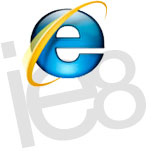
When setting up your website one of the most important aspects will be to choose a domain name. It’s that domain name that will stick with you for the lifetime of your site. You can change the template, change the purpose of the site, fire a designer, hire a designer, but you just cannot change that domain name (unless you scrap it and do a redirect). Finding an available domain name that you like and that is appropriate for the purpose of your site is complicated. Here are a few things to think about when choosing a domain name:
1. Match the domain name to actual name of your site
One of the easiest and best alternatives is to get a domain name that matches the actual name of your site. It’s a duh statement but so many people forget to match the site. You will increase your branding as well as make it easy for visitors to remember the name of your site. The worst thing that can happen is if people fall head over heels for your site but can not find it again simply because the domain name is not the same as the name of your site. For example if you have a bakery site, don’t call it StubbornNelly.com. No one will have a clue what your theme is. Call it, TastyPastry.com, or even Anne Cookies around the corner.com.
2. Keep it short – and Keep it Simple Stupid (KISS)
Keeping the domain name short is a challenge if you are looking for a .com domain as all three and four letter words are already taken. Yep, and all standard English words are gone too (designer.com, awesome.com). Coming up with a name that is short will be easier to remember and pass along by word of mouth. But remember, a domain name should however not be kept short just for the sake of keeping it short. Do not use acronyms as a url if they look bad as an acronym. Think of all those failed websites because people did not see different words as one word. Like don’t come up Patterns, Octogons and Other Pics and give it POOP.com. That’s a failed domain name.
Some great short named domains:
- IBM.com (why call it international business machines)
- digg.com (i dig you, you dig me)
- Match.com (find a matching partner)
3. Use keywords
Optimizing your domain name for search engines is a big help. In using one or two of your single most important keywords you will have better chances of getting a higher rank on the search results, thus increasing traffic. This will not be easy, as most “natural” names already are taken. Combine an important keyword then with something secondary. These sites came up with great names:
- GraphicDesignBlog.com
- TutorialMagazine.com
- Dev-Tips.com
4. Describe your site
Your domain name is an excellent way of describing what your site is all about. Say for example that you manage a site about fishing. Your domain name should in some way describe that fishing is exactly what your visitors will find on the site. Again, fishing is a major keyword of your site, so exploit it with a well picked domain name.

5. Avoid confusion
In general, domain names are not expensive. Register domains with misspellings of your original domain if you want to make sure you catch most type in domain traffic. Redirect those misspelled domains to the main website. This is a great for sites that use hard to spell words or need to protect their brand identity. Examples:
- Google.com
- Googel.com
- Gogle.com
6. Consider alternative domain extensions
If it is impossible to find a good domain name with the prefix .com you might want to consider using an alternative domain extension. Many countries have opened up their country code top level domain for international registration. This is perhaps your chance to create the perfect domain hack. Examples:
- Del.icio.us
- Ma.tt
- Designm.ag
Picking a domain name will take time, energy and some creativity from your side but its worth it in the end. The last tip is to checkout recently expired domain names at snapnames.com – many names will be awful or cost a fortune, but once in a while you will be able find a real gem at a reasonable fee. Good luck on finding the domain of your dreams!
Originally posted on March 21, 2011 @ 3:36 pm
 Microsoft has launched
Microsoft has launched